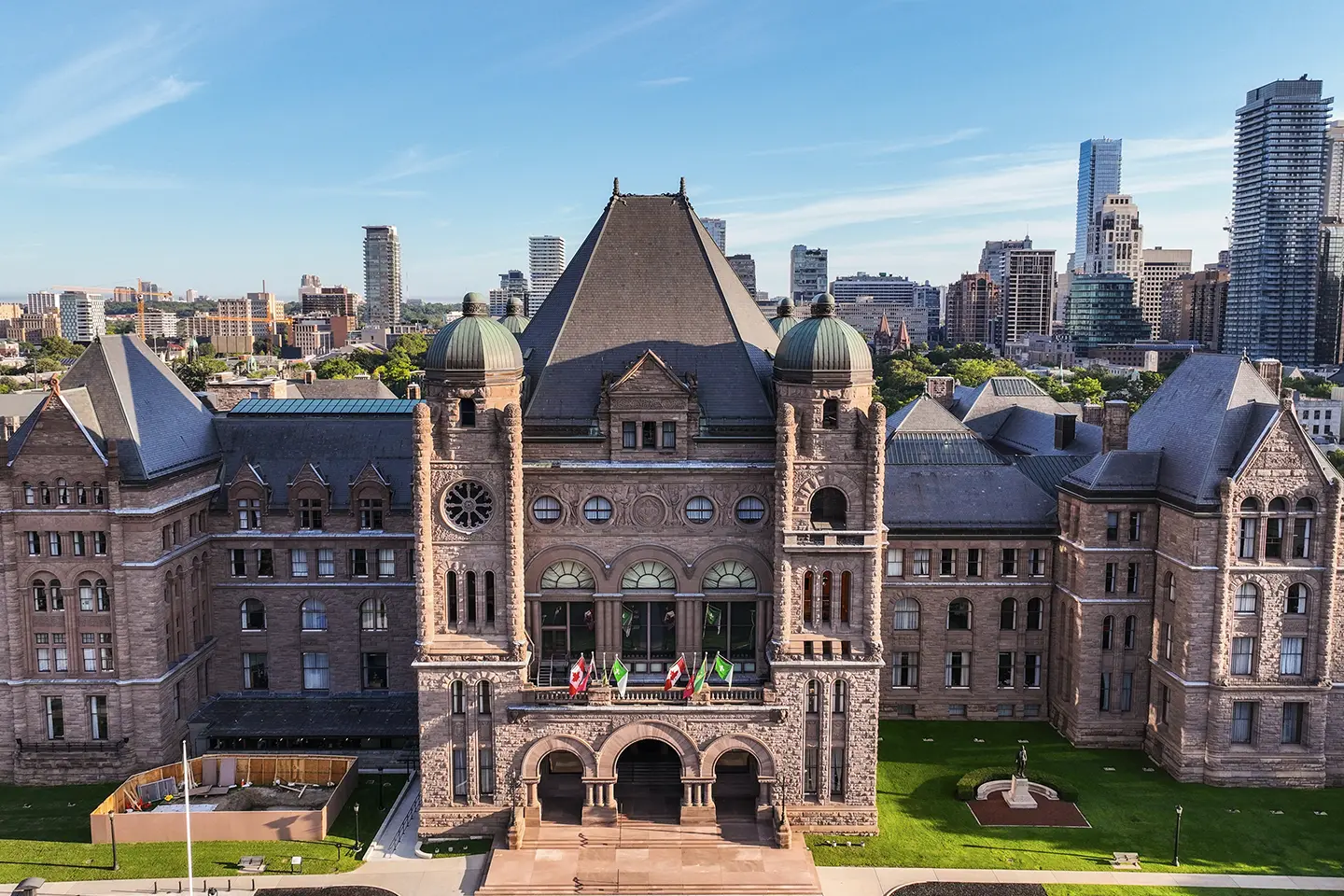Sussex Briefing: The Cap on GHG Emissions from the Oil and Gas Sector

What you need to know:
- Today, the Government announced a cap on greenhouse gas emissions for Canada’s oil and gas sector that requires a 35% to 38% reduction below 2019 levels by 2030.
- It will use a cap-and-trade system where a baseline amount of emissions will be set and then allocated to each producer depending on the size of their operation and current emissions, and then gradually reduced over time.
- The system will also allow up to 25 megatonnes per year of “compliance flexibility”, where companies can buy offset credits or contribute to a decarbonization fund, if they cannot cut their emissions enough to meet the cap.
- Draft regulations will be published by spring 2024, with final regulations likely to arrive early in 2025. Those regulations will narrow down an exact target for 2030 GHG reductions, within the 35-38% range.
- The cap will have major implications for the energy sector, potentially reducing investment in oil and gas, but it could be a big boost for renewables, now that Canada’s largest industry has major incentives to purchase carbon offsets.
Background & Political Context
The Oil and Gas Industry must cut emissions by 35-38% by 2030; Provinces will Push Back
The oil and gas cap is the latest piece of Canada’s emissions reduction plan, which sets out sector-by-sector targets for GHG reductions to reach its overall goal (40% below 2005 levels by 2030). The oil and gas sector currently accounts for 28% of Canada’s total emissions; the plan expects sectoral emissions to fall by more than 42% from 2021 levels to 110 megatonnes, by 2030.
The industry has been clear it cannot achieve this without also cutting production. The Pathways Alliance, which represents the biggest oilsands companies, said it would take until at least 2035 to achieve the government’s target.
Today’s cap-and-trade plan will allow the industry to emit 106-112 megatonnes plus an additional 25 megatonnes of compliance flexibility by 2030. The reduction is less stringent than the government’s initial demand (110 megatonnes without compliance flexibility) but remains above what the industry has said it can achieve.
Alberta Premier Danielle Smith warned she could challenge any emissions cap on the grounds that Ottawa has no jurisdiction over production. The Supreme Court of Canada has ruled that Ottawa can regulate greenhouse gas emissions but natural resources, and therefore oil and gas production, are solely provincial jurisdiction. That means any policy potentially forcing production cuts opens Ottawa to another court challenge by the provinces.
Earlier this week, Canada also outlined new regulations to cut methane from the oil and gas sector by at least 75% below 2012 levels by 2030. These cuts will be a key part of the overall emissions cap. In addition, the oilsands industry has reduced GHG emissions per barrel by 23% since 2009 and Pathways Alliance companies, including Cenovus and Suncor, have committed to spending $16.5 billion to build a major carbon capture project for the oilsands.
However, despite these complementary measures and commitments, it is clear that the proposed regulatory framework will be challenged by the Government of Alberta at every step of the process.
National Cap-and-Trade system for Oil & Gas
The foundation of the proposed policy is a national cap-and-trade system for oil and gas, that will give emissions allowances to facilities covered by the system. Each facility must have one allowance for each tonne of carbon pollution it emits. Over time, the government will give out fewer allowances and to comply, facilities must reduce their emissions or buy allowances from other facilities that have reduced their emissions. They can also use a limited number of other compliance flexibilities, such as carbon offset credits.
The cap-and-trade system for oil and gas emissions will be applied through regulations under the Canadian Environmental Protection Act, 1999 (CEPA).
Included Facilities
The cap-and-trade system will apply to emissions from oil and gas producers, including liquified natural gas (LNG) producers and the upstream subsector, which is comprised of conventional oil, offshore, oil sands, and natural gas production and processing. About 85 percent of the oil and gas sector’s total emissions came from upstream in 2021, and new LNG projects are projected to be a growing source of emissions.
Emissions from refining and downstream distribution will NOT be subject to the emissions cap. Refineries are subject to the Clean Fuel Regulations.
The Emissions Cap
The emissions cap will set a limit on emissions and will be phased in between 2026 and 2030. The 2030 emissions cap level will be in the range of 106 to 112 million tonnes (Mt) of greenhouse gas emissions. That level is 35% to 38% below 2019 emission levels. The government will distribute emissions allowances equal to this amount of emissions. Allowances will be distributed to facilities free of charge, initially. The intention is to reduce costs to support continued production while ensuring that emissions decline.
The Government has based its plans on production projections from the Canada Energy Regulator’s most recent report, and input from industry on current plans for projects and technologies. The Government estimates that by 2030, the covered parts of the sector should be able to reduce emissions to 131 to 137 Mt, or about 20 percent to 23 percent below 2019 emission levels, even as it increases production by about 12 percent above 2019 levels.
To bridge the gap between the emissions cap (106 to 112 Mt) and the estimated technically achievable reductions in 2030 (131 to 137 Mt), the cap-and-trade system will include two types of compliance options to compensate for emissions above the cap:
- Offset credits from Canada’s Greenhouse Gas Offset Credit System and from provincial systems, which represent real, additional, and verified projects that reduce emissions.
- Contributions of a specified amount per tonne to a decarbonization fund, which would invest its proceeds in future greenhouse gas reductions.
Taken together, the emissions cap (total emissions allowances), plus the maximum allowable amount of additional compliance options (offset credits and decarbonization fund contributions), establish the legal upper bound, or maximum emissions the sector will be allowed to emit in 2030.
The levels of the emissions cap and legal upper bound are expressed as ranges in the Framework, given the Government of Canada’s commitment to ongoing engagement on this policy. The final 2030 emissions cap and legal upper bound will be set based on the best available information at the time the regulations are finalized, informed by data and information received from interested parties in response to the Framework, as well as by regulatory design details.
Timelines
In mid-2024, the Government plans to publish the proposed cap-and-trade regulations for oil and gas emissions for public comment. Publication of the final regulations is targeted for 2025, with the first reporting obligations starting as early as 2026. The start date of the first compliance period will be determined as part of the regulatory process and will begin between 2026 and 2030.
Key Design Features
- Ensure emissions reductions occur within the oil and gas sector: Emissions allowances will be tradeable among regulated facilities, but only within the oil and gas emissions cap-and-trade system. Surplus credits, performance credits, or other permits or allowances from other regulations or carbon pricing systems, including federal and provincial output-based pricing systems or cap-and-trade systems, will not be eligible for use within the oil and gas emissions cap-and-trade system.
- Complement other policies: The oil and gas emissions cap-and-trade system will be designed to complement other policies, including carbon pricing and methane regulations. For example, emissions reductions made by an oil and gas facility would count toward their obligations under multiple policies, including carbon pricing, methane regulations, and the cap-and-trade system.
- Distribute free allowances in a way that recognizes better performance: Emissions allowances will be distributed to facilities free of charge in the initial period. The approach to distributing the allowances between participants will be designed to recognize better performers that can produce the same or similar products with a lower emissions intensity. The goal will be to encourage all facilities to move toward highly efficient, low-carbon production.
- Provide flexibility to accommodate different decarbonization pathways: Some key low-carbon technologies, including carbon capture and storage, need time to deploy. To provide flexibility on how quickly reductions happen, the oil and gas emissions cap-and-trade system will have three-year compliance periods and will allow facilities to bank unused emissions allowances for sale to other regulated facilities within the system.
- Require annual reporting of regulated facilities’ emissions: All covered facilities will be required to annually report their production and their greenhouse gas emissions. To reduce administrative burden, reporting will align with other programs where possible.
Next Steps
The Government of Canada will continue consultations on how to phase in the system between 2026 and 2030. The Government welcomes input on the Regulatory Framework to inform the draft regulations, which are planned for mid-2024.
Formal written submissions in response to the Framework should be submitted by email to PlanPetrolieretGazier-OilandGasPlan@ec.gc.ca by February 5, 2024.


